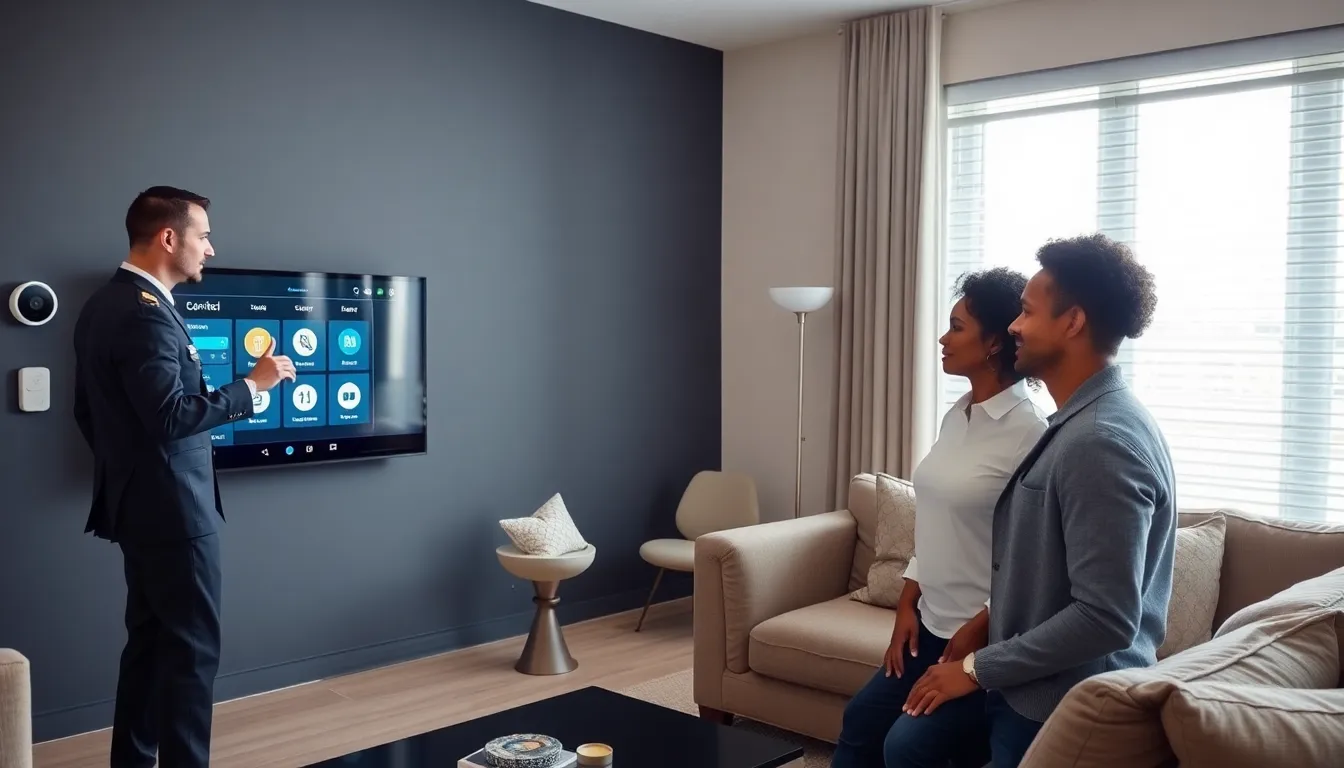Home automation isn’t just a trend: it’s rapidly becoming the new normal. Imagine controlling your lights, thermostat, and security system from your phone, all while sipping coffee on your couch. Sounds like something out of a sci-fi movie, right? But it’s here, and it’s totally manageable with the help of skilled home automation installers. They make turning a simple house into a smart home as straightforward as pie, or should we say ‘smart pie’? Let’s jump into everything you need to know about home automation, why it’s worth your time, and how to choose the right installer to turn your dreams into reality.
Table of Contents
ToggleUnderstanding Home Automation

Understanding home automation is the first step toward transforming a traditional home into a smart living space. Essentially, home automation integrates technology into your home, allowing you to control various systems remotely. Think about your heating, lighting, and security systems, all working in seamless harmony to enhance your comfort and security.
Devices such as smart thermostats, automated blinds, and smart security cameras have become commonplace, showcasing how tech can tailor living environments to personal preferences. When homeowners understand what home automation is and can do, they can better appreciate the benefits that follow.
Benefits of Home Automation
The advantages of home automation are as impressive as they are numerous. First off, convenience is a major player. Picture this: you can adjust your thermostat while lounging on the sofa or check if you locked the door from your office. It frees up time for what truly matters.
Energy efficiency is another compelling benefit. Smart systems can automatically adjust settings based on your routines, meaning they help save money on those pesky energy bills. Not only does this lighten the wallet, but it also lowers your carbon footprint. This is a win-win.
Enhanced security is yet another crucial aspect. Home automation systems can send alerts to your smartphone when unusual activities are detected, even letting you monitor your property in real-time. Also, smart locks ensure you never fumble for keys again.
Choosing the Right Home Automation Installer
Choosing the right home automation installer can feel like finding a needle in a haystack. It’s essential to prioritize experience and customer reviews. Research potential installers to learn about their track record and customer satisfaction. If possible, ask for referrals to see how they’ve transformed other homes into smart havens.
Also, look for installers who offer tailored solutions. Every home has unique needs, and successful automation depends on understanding those specific requirements. Finally, ensure they provide comprehensive after-sales support. Technology can be temperamental, and knowing help is just a call away can be a game-changer.
Types of Home Automation Systems
Home automation isn’t a one-size-fits-all scenario. Various types of systems cater to different needs. For starters, there’s lighting control systems, which allow users to adjust ambiance with a tap or voice command. Imagine hosting a dinner party and effortlessly dimming the lights.
Next, we have smart climate control systems. These include smart thermostats that learn your habits, ensuring comfort while conserving energy. Then come security systems, think smart locks, cameras, and alarm systems that ensure peace of mind at all times.
Finally, entertainment systems can make movie nights unforgettable. Imagine controlling everything from lighting to sound with a single device. Each type plays a distinct role in creating a connected environment.
The Installation Process: What to Expect
Understanding the installation process demystifies the experience and keeps stress levels low. Initially, a consultation with the installer is scheduled. They’ll assess your home and discuss your needs and preferences. This stage is crucial, it sets the stage for what’s to come.
Next comes planning, where installers design a tailored automation solution. During this phase, they’ll discuss different systems and how best to integrate them into your home. Follow-up installation typically occurs in a few stages. Installers will set up devices, connect them to the network, and test functionality. Expect a demonstration of how everything operates. Finally, after everything is set up, you’ll receive training on managing your new smart systems.
Costs Involved in Home Automation Installation
When assessing the costs involved in home automation installation, various factors come into play. The size of your home, the complexity of your desired systems, and the type of technology all impact the final bill.
Generally, a basic setup might start at a few hundred dollars, including initial equipment and installation. But, more advanced systems can soar into the thousands, especially if you’re incorporating high-end technology. Homeowners should consider all long-term savings: the initial investment often pays off in energy efficiency and improved home value. Budgeting wisely means getting quotes from multiple installers and assessing what each package includes.
Future Trends in Home Automation
As home automation evolves, it’s essential to stay informed about emerging trends. One significant shift is the rise of AI integration. Smart systems are becoming increasingly intuitive, learning user preferences and adapting automatically. Imagine your thermostat adjusting itself without human intervention.
Integration with renewable energy sources, like solar panels, is also on the rise. Homeowners can create more sustainable homes that not only decrease bills but also minimize environmental impact. Voice command technology is improving daily, and as smart speakers become more prevalent, expect seamless control over home systems with mere words. From advanced features to increased compatibility with personal devices, the future of home automation looks promising.


